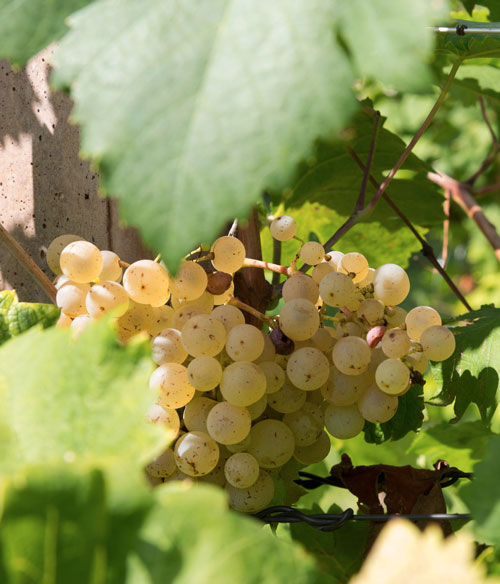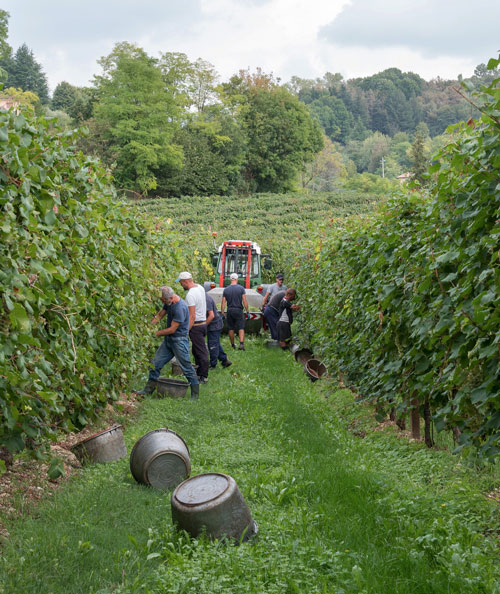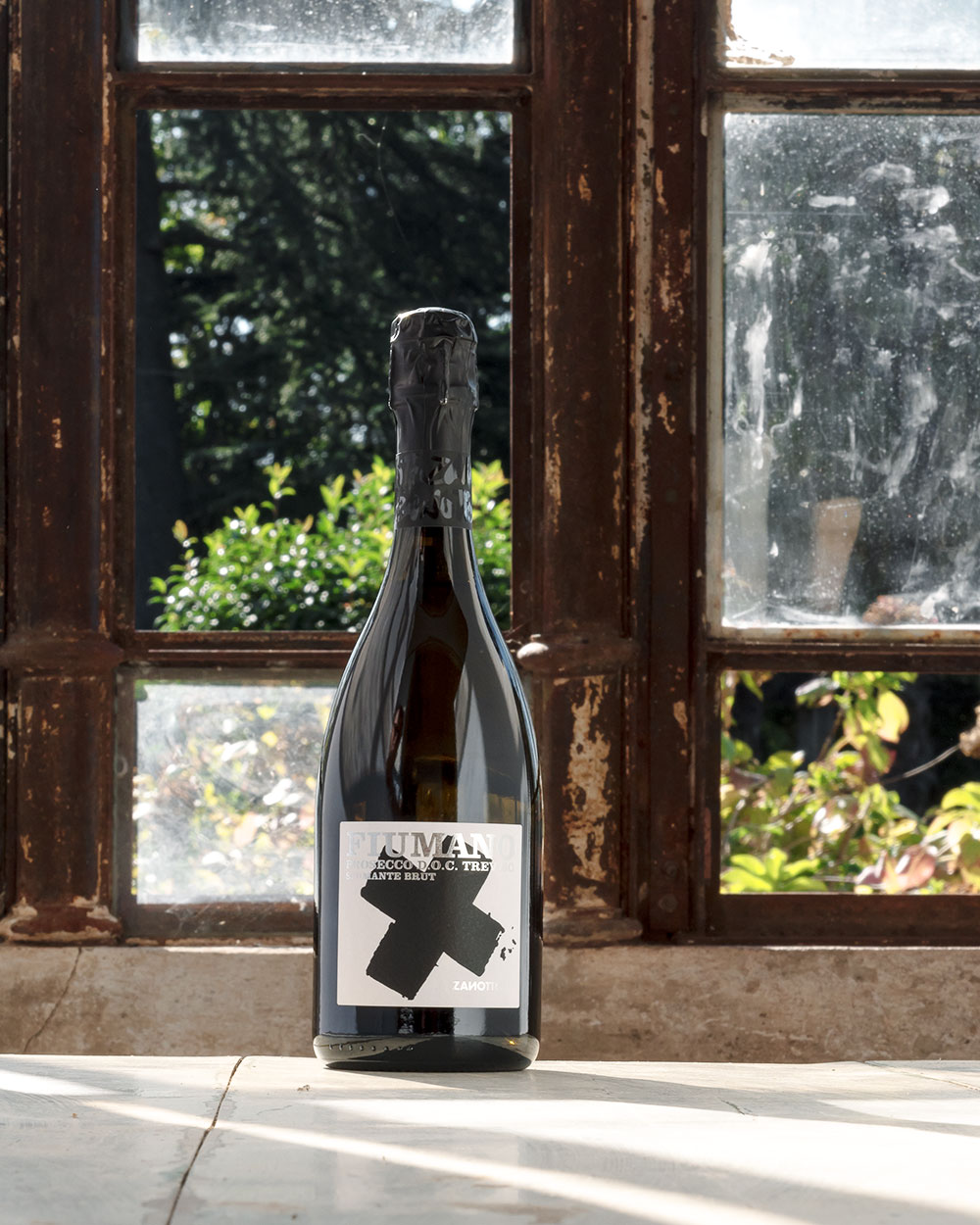Non sono presenti prodotti nel carrello.
Fiumano
Prosecco Treviso DOC
Spumante Brut
11% vol – 750 ml
Prosecco DOC wine made from 100% Glera grapes grown on the hills of Treviso at 150 m above sea level.
The fermentation process takes place in steel tanks and lasts 30 days before the ‘prise de mousse’. This Spumante Brut wine is left with a 10 g/L residual sugar.
Persistent foam and fine perlage.
Intense bouquet with marked fruity notes. The typical elegance that defines all Spumante Brut wines.
Serving temperature: 7 – 8 °C
Sparkling and Semi-Sparkling Wines: The Martinotti / Charmat Method
To learn more
What’s Inside a Bottle of Prosecco?
When you pop open a bottle of Prosecco, what grapes are you pouring into your glass? The star is always Glera, required to make up at least 85% of the blend by regulation: it’s the one bringing that fresh taste, with notes of apple and white flowers. But the remaining 15% can shift the story, shaping the character of each bottle.
In the more common DOC version, the mix gets colorful: Verdiso adds a herbaceous kick, Perera brings peach-like hints, while Bianchetta Trevigiana offers acidity and finesse. You might also find Chardonnay for softness or Pinot Nero, vinified white for structure or red for Rosé (where it’s fixed at 10-15%). The rarer Glera Lunga boosts aroma.
In the DOCG, like Conegliano Valdobbiadene or Asolo, native grapes take the lead: Verdiso, Bianchetta, and Perera, grown for centuries on Veneto’s hills, join Glera to highlight the land. For sparklers, Chardonnay or Pinot can sneak in, but in the finest glasses — like Cartizze, that 106-hectare cru from Valdobbiadene with its ripe apple and floral notes — the focus stays on local varieties. Here, producers often go all-in on Glera or pair it with a dash of Bianchetta or Perera, rooted in the same soil.
Every bottle is a choice: different grapes, same soul. DOC or DOCG, it’s always a sip of tradition.

To learn more
The Prosecco Phenomenon: A Captivating Story
Over the past few decades, Prosecco has emerged as a global enological phenomenon, evolving from a niche wine of Italy’s Northeast to a symbol of conviviality and commercial triumph on international markets. Its meteoric rise ignited in the 1990s, fueled by growing demand for its fruity lightness and crisp bubbles, made distinctive by the Martinotti-Charmat method. Yet, the roots of this ascent stretch back further, woven into the fabric of a singular territory.
In 1962, eleven producers from Valdobbiadene and Conegliano established a consortium to promote Prosecco, marking the start of a journey toward recognition. The following year, in 1963, Valdobbiadene hosted the first National Sparkling Wine Exhibition, an event that brought together Italy’s leading sparkling wine producers and thrust Prosecco into the spotlight, laying the groundwork for its future fame. As its reputation grew, cultivation expanded beyond its original borders, setting the stage for a worldwide conquest.
The Denomination of Controlled Origin
In 1969, the area between Conegliano and Valdobbiadene earned the Denomination of Controlled Origin (DOC), a certification safeguarding 15 municipalities and establishing quality standards. Four years later, in 1973, the hills of Asolo and Montello secured their own DOC, standing out for the finesse of their bubbles, born of a unique microclimate and centuries-old winemaking traditions.
The Turning Point of 2009
The year 2009 marked a revolution: the DOC zone expanded to nine provinces across Veneto and Friuli Venezia Giulia, encompassing plains and hills that produce a fresh, versatile Prosecco tailored to global tastes. That same year, the hills of Asolo ascended to DOCG status, crafting wines of rare elegance, nurtured by winemakers devoted to preserving their land’s beauty. In the hills of Conegliano and Valdobbiadene, also elevated to DOCG, Glera reaches its pinnacle, culminating in Cartizze—a legendary cru from Valdobbiadene of unmatched refinement. In 2019, this land was crowned a UNESCO World Heritage Site, a tribute to its viticultural landscape, sculpted over centuries in harmony with nature, where every vineyard whispers a timeless tale of beauty.
Today, with over 28,000 hectares under cultivation, Prosecco production exceeds 600 million bottles annually, surpassing Champagne (around 400 million) while remaining more accessible in price—a triumph that has transformed Italy’s Northeast into an enological powerhouse.
Versatility at the Table
The king of aperitifs and convivial moments, Prosecco also shines in food pairings. The Extra Dry (12-17 g/l of residual sugar) complements seafood risottos or fruit desserts; the Brut (<12 g/l), crisp and dry, enhances fish appetizers or sushi. The increasingly popular Extra Brut (<6 g/l) elevates shellfish and fresh cheeses. A niche of “col fondo” Prosecco—bottle-refermented in the traditional method—has also gained traction; cloudy with yeasty notes, these wines hark back to Prosecco’s origins and pair beautifully with cured meats or rustic dishes like polenta with mushrooms. Recently embraced by DOC and DOCG regulations, they blend heritage with a modern twist.
In a glass of Prosecco, you taste the pride of a region, the foresight of a success, and the ability to charm the world, one bubble at a time. It’s a wine that bridges past and future, beckoning us to uncover what other treasures this land might yet reveal.




